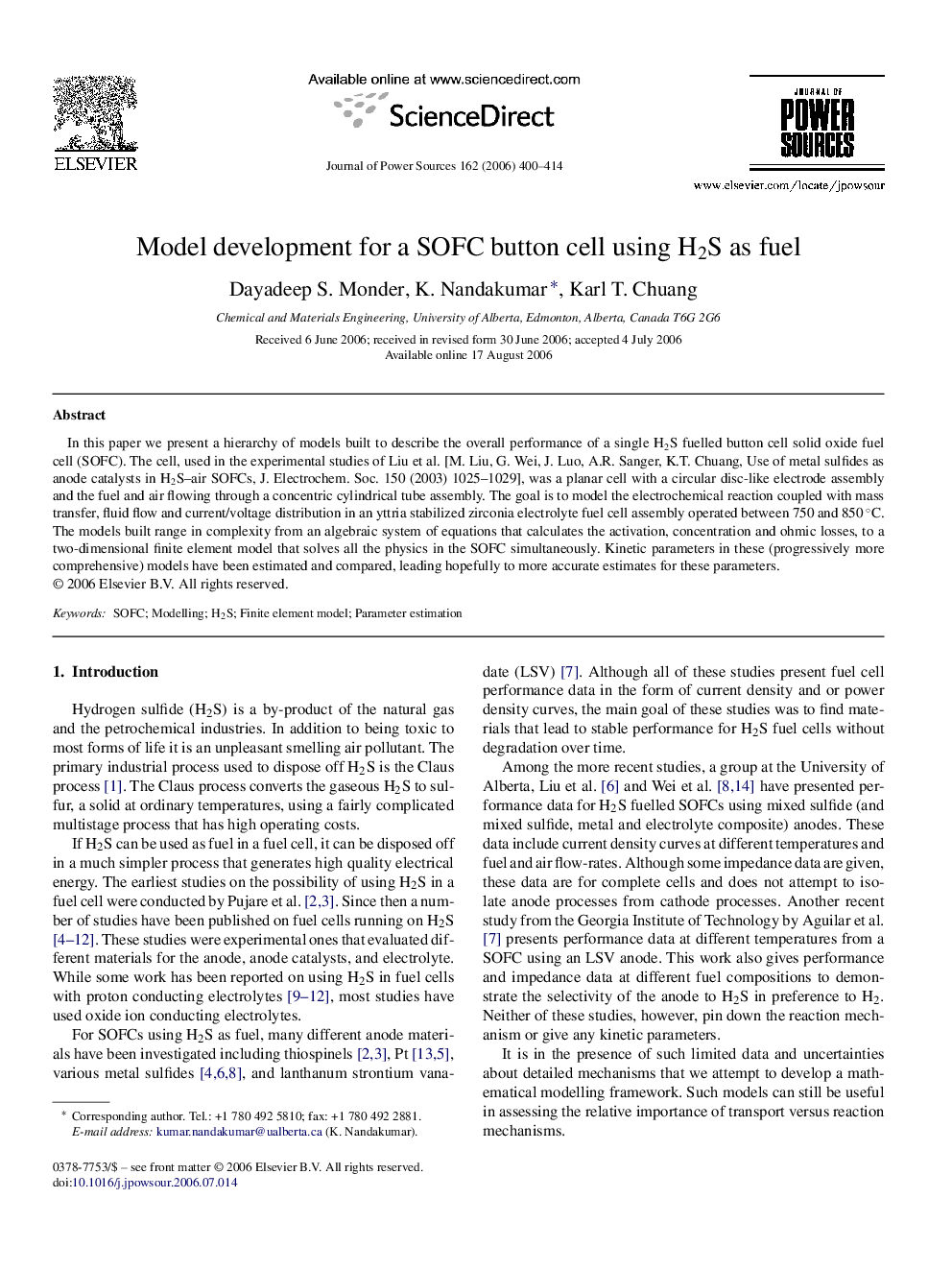| Article ID | Journal | Published Year | Pages | File Type |
|---|---|---|---|---|
| 1291860 | Journal of Power Sources | 2006 | 15 Pages |
In this paper we present a hierarchy of models built to describe the overall performance of a single H2S fuelled button cell solid oxide fuel cell (SOFC). The cell, used in the experimental studies of Liu et al. [M. Liu, G. Wei, J. Luo, A.R. Sanger, K.T. Chuang, Use of metal sulfides as anode catalysts in H2S–air SOFCs, J. Electrochem. Soc. 150 (2003) 1025–1029], was a planar cell with a circular disc-like electrode assembly and the fuel and air flowing through a concentric cylindrical tube assembly. The goal is to model the electrochemical reaction coupled with mass transfer, fluid flow and current/voltage distribution in an yttria stabilized zirconia electrolyte fuel cell assembly operated between 750 and 850 °C. The models built range in complexity from an algebraic system of equations that calculates the activation, concentration and ohmic losses, to a two-dimensional finite element model that solves all the physics in the SOFC simultaneously. Kinetic parameters in these (progressively more comprehensive) models have been estimated and compared, leading hopefully to more accurate estimates for these parameters.
